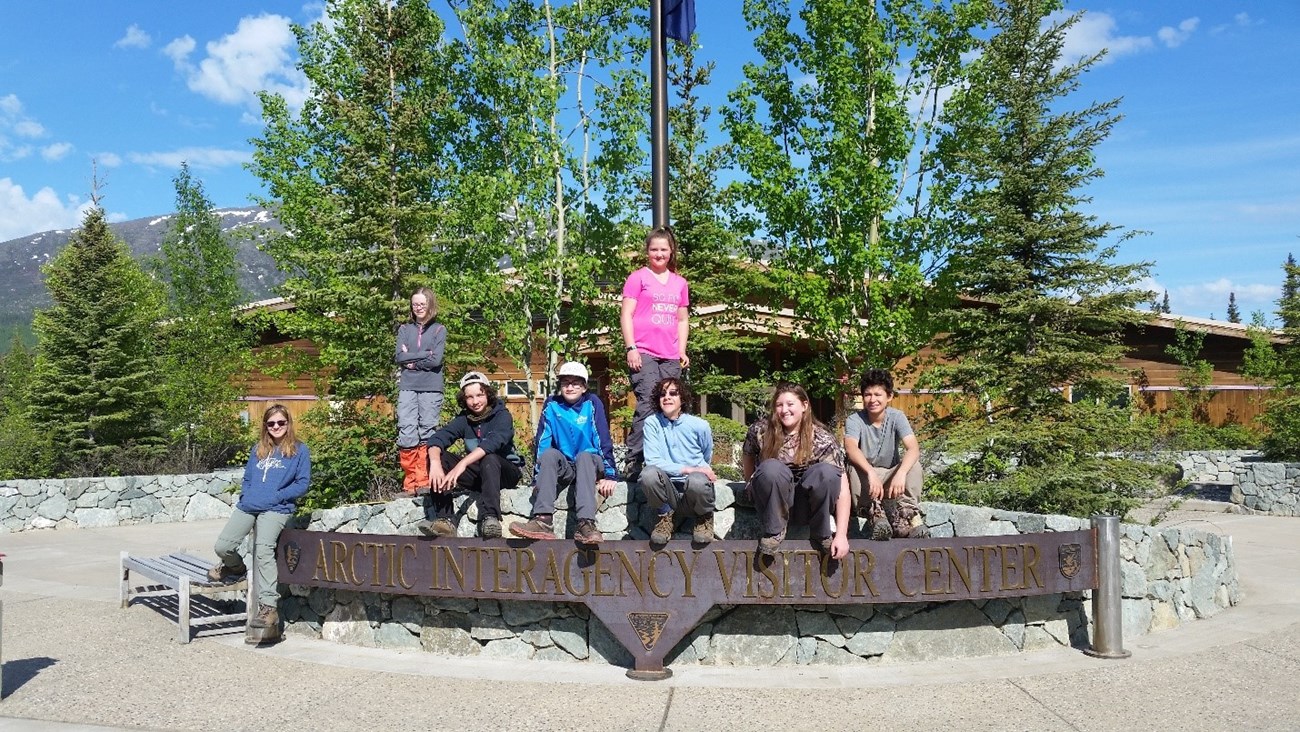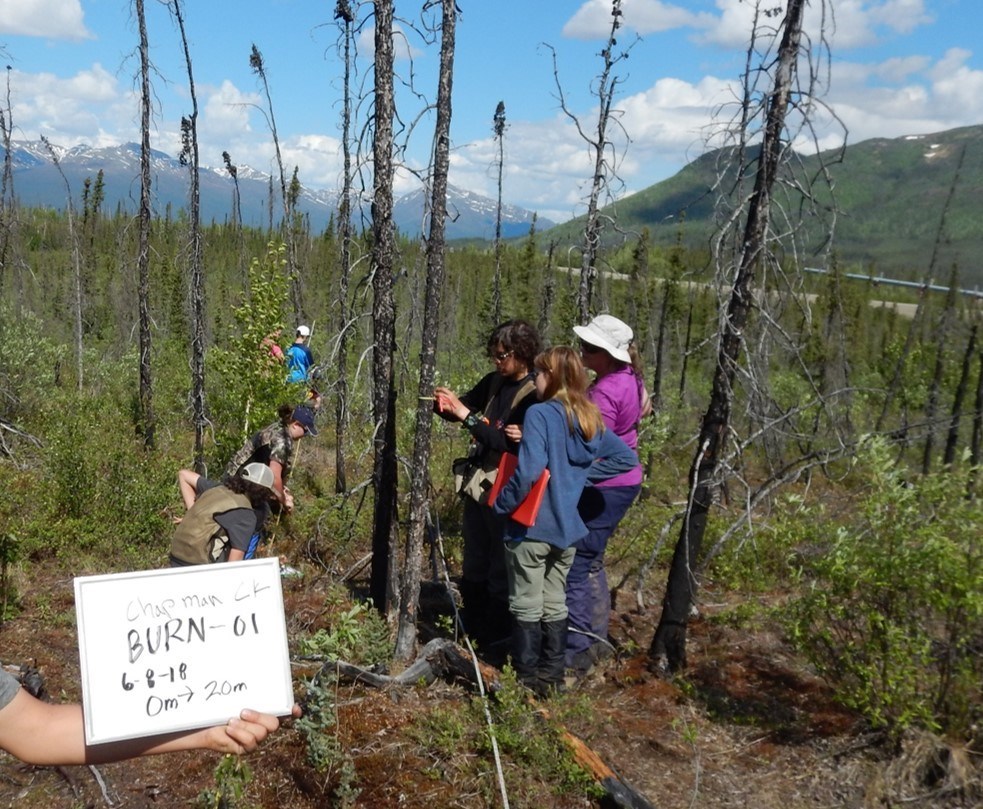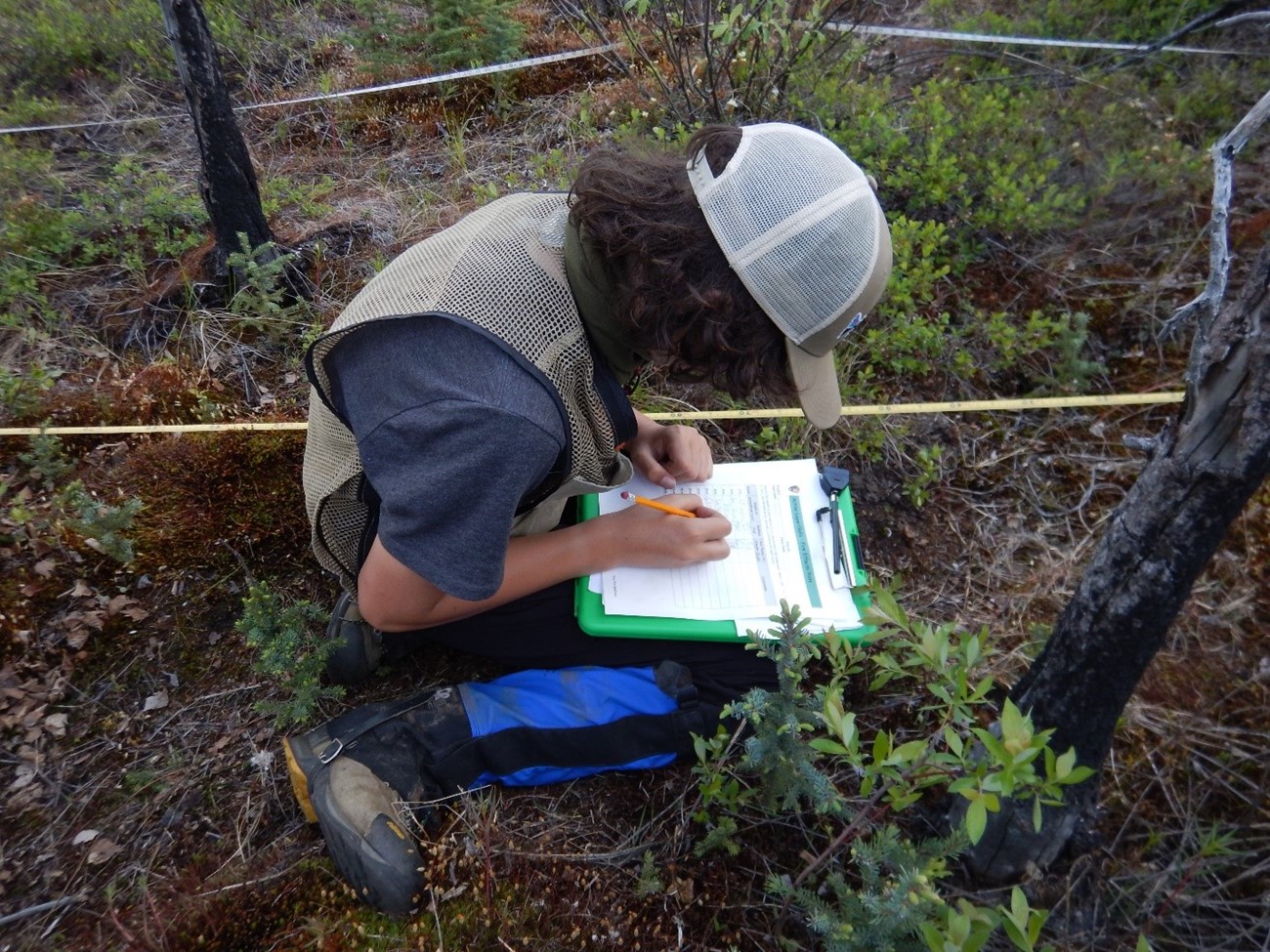Last updated: October 26, 2021
Article
North for Science! Learns About Fire Ecology in Alaska

J. Hrobak/NPS
In June 2018, a combined group of eight 7th and 8th grade students embarked on an exciting week long journey up the Dalton Highway and into the Brooks Mountain Range in Alaska as part of the North for Science! Program. This science education program provides an opportunity for students to learn basic camping skills and teamwork, and provides direct interaction with a variety of science and research professionals while working in the outdoor field environment.

J. Hrobak/NPS

J. Hrobak/NPS
While in the field, students compared the characteristics of a 15-year-old burned area to an unburned area and described what the fire behavior might have looked like in terms of intensity and severity. They learned how to navigate using a GPS and compass, locate plot corners based on photographs, measure percent slope, and setup a fire effects monitoring plot by laying out transect lines. The group also practiced monitoring techniques including measuring active layer depths and soil temperature, counting trees and taking DBH (diameter at breast height) measurements, using quadrats to count seedlings, and tallying down woody fuels using a Go/No-Go gauge. Finally, the students ended their field excursion with some basic plant identification and a comparison of duff depths between burned and unburned plots.
This was a fantastic opportunity to expose and engage students with real, on-going research projects in Alaska. Programs like this one help foster critical thinking skills and allow the chance to be a part of the scientific process. The North for Science! Program is co-sponsored by the Alaska Song Bird Institute, National Park Service, US Fish and Wildlife Service, and the Bureau of Land Management.
